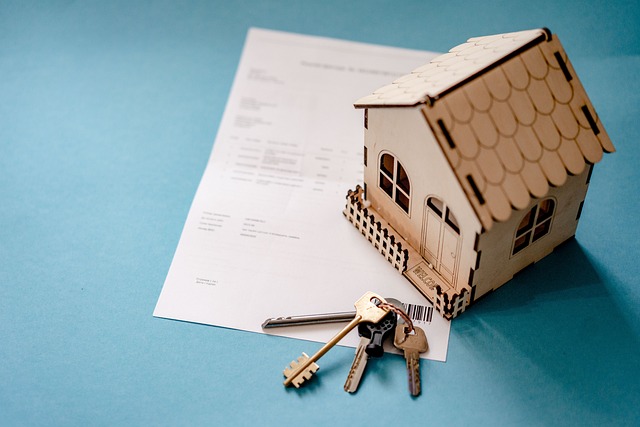“Many homeowners believe their standard policy protects them from floods, but these natural disasters are becoming increasingly prevalent and destructive. This leaves properties vulnerable to significant financial loss. It’s time to shed light on the gaps in home insurance coverage and explore flood insurance as a vital solution.
In this comprehensive guide, we’ll navigate the rising threat of flooding, help you assess your property’s risk, decode various insurance policies, and provide insights into securing suitable protection for your home and valuable contents, all while considering competitive house insurance rates and personal liability coverage.”
- Understanding the Gaps: How Home Insurance Policies Handle Flood Damage
- The Rising Threat of Flooding: Why Separate Flood Insurance is Crucial
- Assessing Your Property's Flood Risk: A Step-by-Step Guide
- Decoding Flood Insurance Policies: Key Coverage Options and Exclusions
- Comparing Home Insurance Quotes: Incorporating Flood Protection
- Protecting Your Investment: The Role of Personal Liability Coverage
- Comprehensive House Insurance Rates: Balancing Cost and Peace of Mind
Understanding the Gaps: How Home Insurance Policies Handle Flood Damage

Standard homeowners insurance policies typically exclude flood damage, leaving many properties vulnerable to significant financial loss in case of flooding events. This gap in coverage is crucial to understand, especially given the increasing frequency and severity of flooding incidents across various regions. While home insurance coverage generally protects against perils like fires, theft, and vandalism, floods are often not included.
When considering property insurance, it’s essential to assess your property’s flood risk. Factors such as location near bodies of water, historical rainfall patterns, and topography can influence the likelihood of flooding. Once you have a clearer understanding of these risks, you can explore suitable flood insurance options with insurance providers. Personal liability coverage and home contents insurance are crucial components of comprehensive protection, ensuring peace of mind and financial security in case of unexpected flood-related incidents.
The Rising Threat of Flooding: Why Separate Flood Insurance is Crucial

The threat of flooding is on the rise globally, driven by climate change and other environmental factors. As extreme weather events become more frequent and intense, homes and properties located in low-lying areas or near water bodies are increasingly at risk. Standard homeowners insurance policies typically exclude flood damage, leaving policyholders vulnerable to significant financial losses in case of a flooding incident. This gap in coverage highlights the growing importance of considering separate flood insurance as a crucial component of comprehensive property protection.
Obtaining flood insurance offers several key advantages. Firstly, it provides financial security by covering the cost of repairing or rebuilding your home and replacing personal belongings damaged by floodwater. Secondly, it includes personal liability coverage, protecting you against claims arising from injuries or damages to others’ property caused by a flooding event on your insured premises. Additionally, many flood insurance policies include provisions for temporary housing expenses if your home becomes uninhabitable due to flood damage, ensuring you have support during the recovery process. When comparing home insurance quotes, exploring various flood insurance options is essential in safeguarding your investment and peace of mind.
Assessing Your Property's Flood Risk: A Step-by-Step Guide

Assessing your property’s flood risk is a crucial step in determining if you need additional protection through a separate flood insurance policy. Here’s a step-by-step guide to help you get started:
1. Examine Your Location: Start by looking at your property’s surroundings. Is it located near rivers, lakes, or coastal areas that are prone to flooding? Check historical data on local flooding events and understand the frequency and severity of these incidents in your area.
2. Inspect Topography and Drainage: Consider the topography of the land around your home. Are there any natural depressions, low-lying areas, or poor drainage systems that could contribute to water accumulation during heavy rains? A well-draining landscape is less likely to experience flooding.
3. Evaluate Nearby Infrastructure: Look at the condition and age of nearby infrastructure, including roads, bridges, and dams. Older or poorly maintained structures might be more susceptible to failing during severe weather events, potentially causing local flooding.
4. Research Weather Patterns: Investigate typical weather patterns in your region. Are there seasons or specific times of year when heavy rainfall is more common? Understanding these patterns can help you anticipate potential flood risks.
5. Check with Local Authorities: Reach out to your local government or emergency services departments. They often have detailed information about flooding hazards in the area, including any ongoing initiatives to mitigate these risks.
6. Get Home Insurance Quotes: Once you have a clear picture of your property’s flood risk, compare home insurance quotes from different providers. Many standard home insurance policies do not cover flood damage, so be sure to inquire specifically about flood insurance options and their associated house insurance rates. Remember to consider personal liability coverage and home contents insurance as part of your overall protection needs.
Decoding Flood Insurance Policies: Key Coverage Options and Exclusions

Flood insurance policies offer specific protections tailored to address the unique risks associated with flooding events. Understanding these coverages and exclusions is crucial when considering such a policy. Key options often include coverage for physical damage to your property, such as your home or belongings, from floodwater intrusion. This can help protect against structural issues and repair costs. Additionally, personal liability coverage may be included, shielding you from financial responsibility for any injuries or damages caused to others on your insured property due to flooding.
However, it’s essential to note that these policies typically come with certain exclusions. Common exclusions involve situations where damage is caused by sea or river overflow, rapid accumulation of water from heavy rain, or flooding that occurs more than a specific distance from an established body of water. When evaluating home insurance quotes, carefully review these details to ensure the policy aligns with your property’s flood risk and offers comprehensive protection for your house insurance rates, including coverage for both your home structure and personal belongings (home contents insurance).
Comparing Home Insurance Quotes: Incorporating Flood Protection

When comparing home insurance quotes, it’s crucial to assess policies that incorporate flood protection, especially in areas prone to flooding. While standard homeowners insurance typically excludes flood damage, adding a separate flood insurance policy can offer vital coverage for such incidents. This step is essential given the increasing frequency and severity of flooding events worldwide.
By evaluating different providers, you can explore various home insurance quotes tailored to your location and property’s specific flood risk. Consider policies that not only protect against structural damages but also cover personal belongings (home contents insurance) and potential legal liabilities (personal liability coverage). Understanding these aspects ensures comprehensive protection and peace of mind, allowing you to safeguard your investment effectively.
Protecting Your Investment: The Role of Personal Liability Coverage

Protecting your home and its contents is a crucial aspect of responsible homeownership. Standard home insurance policies typically cover a range of perils, from fire and theft to vandalism and natural disasters like earthquakes or hurricanes. However, one common exclusion is flood damage. This leaves many homeowners vulnerable, especially in regions prone to flooding events that are becoming increasingly frequent due to climate change. To safeguard your significant investment, considering a separate flood insurance policy is a prudent step.
Personal liability coverage, often included in home insurance policies, plays a vital role in protecting you against financial losses arising from potential lawsuits. This coverage helps defray costs if you’re held accountable for injuries or property damage that occurs on your premises. When paired with flood insurance, it ensures that not only is your physical property protected but also any legal repercussions resulting from flood-related incidents. Obtaining home insurance quotes that include comprehensive personal liability coverage gives homeowners peace of mind and financial security during these uncertain times.
Comprehensive House Insurance Rates: Balancing Cost and Peace of Mind

Comprehensive house insurance rates can vary greatly depending on several factors. When considering home insurance quotes, it’s essential to balance the cost of coverage with the peace of mind it provides. Factors influencing these rates include your location—areas prone to natural disasters like floods or hurricanes may have higher premiums—as well as the value and age of your property. Personal liability coverage protects against financial loss if you’re held responsible for someone’s injury on your premises, while home contents insurance safeguards your belongings in case of theft or damage.
When evaluating home insurance policies, compare comprehensive house insurance rates side by side to find the best balance between affordability and adequate protection. This ensures that should unexpected events occur—be it a flood, fire, or break-in—you’re covered and can rebuild or replace what matters most without undue financial strain.
In light of increasing flooding events, it’s no longer a question of if your home will face flood damage, but when. Standard home insurance policies weren’t designed to cover such widespread and sudden losses. Therefore, considering a separate flood insurance policy is a proactive step towards protecting your property, peace of mind, and financial security. By assessing your property’s flood risk and exploring suitable coverage options, you can ensure that your investment is safeguarded against these unpredictable events. Don’t wait until it’s too late; take the initiative to compare home insurance quotes today and choose a policy that balances cost and comprehensive protection, including personal liability coverage for added peace of mind.



